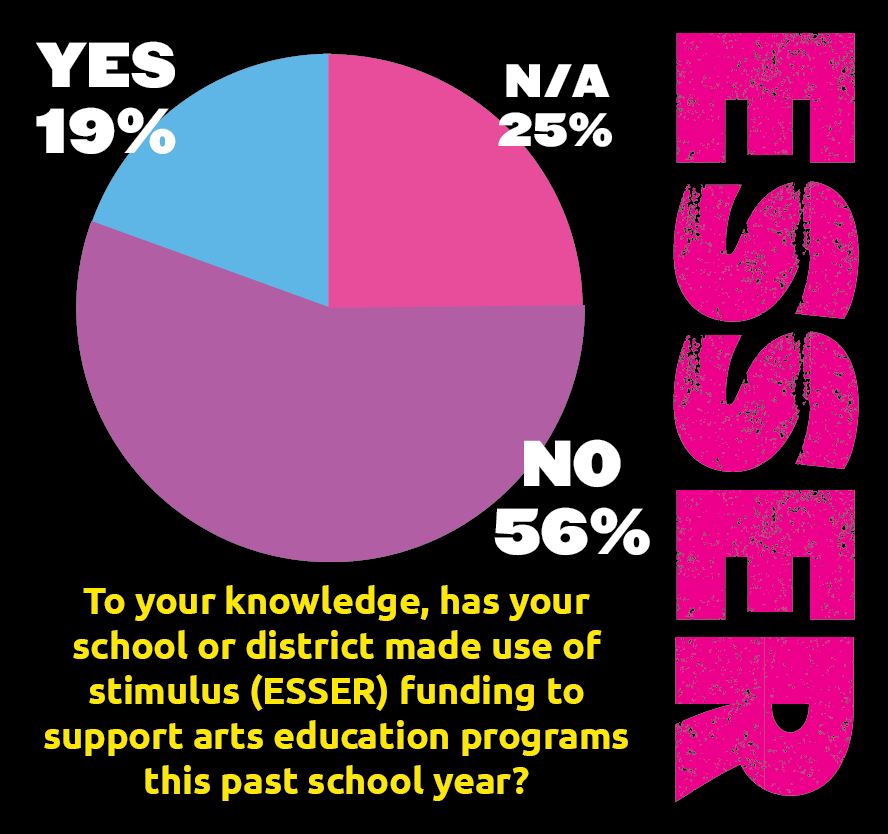By Jamie Kasper, Director, Arts Education Partnership
In January 2021, the National Coalition for Core Arts Standards (NCCAS) rolled out the Arts ARE Education campaign in response to growing concerns about post-pandemic arts education in schools. The campaign asks arts education professionals and supporters to sign a pledge and/or pass a resolution to support arts education, as well as provides talking points and other tools for advocates.

As of June 2021, 25 schools and districts had passed the resolution, and more than 2,600 individuals had signed the pledge. To gauge effects of the pandemic on arts education, the Arts Education Partnership collaborated with the ARE campaign on a short survey to begin to capture changes in school districts over the 2020-2021 school year.
All individuals who signed the pledge received a survey link; of 2,500 people who received the link, 149 – or 6% – responded. Educators were the largest groups of respondents, with community members, parents, students and others also completing the survey.
Survey results
Respondents rated the extent to which their schools or districts were engaging in a list of actions at the time of the survey as compared to before the pandemic. These actions aligned to the talking points in the Arts ARE Education campaign:
Providing materials, equipment and resources needed to teach arts curricula.
Scheduling arts educators to teach in the arts discipline(s) for which they are trained.
Funding arts education programs.
Providing or enabling appropriate professional development for arts educators at levels comparable to other subjects
Offering a similar number and a range of arts classes.
Holding arts classes in spaces built and/or furnished for arts learning.

Overall, these survey data show that school districts continue to make decisions locally and those decisions affect arts education. Some schools and districts decreased support for arts education while others increased support. Schools and districts provided more support for materials and scheduling than for professional development and dedicated arts spaces.
The survey also asked two yes/no questions.


The majority of respondents indicated that their schools or districts had not included the arts with other academic content areas when talking about learning loss or learning acceleration. The majority also responded that – to their knowledge – their schools and districts did not use previous federal K-12 education relief funding, totaling approximately $67 billion, to support arts education.
Finally, respondents were invited to add other information in an open-ended final question. A trend in these responses indicated that some schools and districts repurposed their certified arts educators to teach remedial classes in tested content areas during the 2020-2021 school year.
In March 2021, Congress approved a third education relief act, known as ESSER III, providing an additional $126 billion in dedicated funding for K-12 education through 2024. Because of the timing, these survey results do not reflect this funding. However, as these additional resources begin to make their way into local school districts, the Arts ARE Education campaign plans to issue a second, follow up survey to track how and where these federal dollars are impacting arts education in the 2021-2022 school year and to review how the funds are helping districts meet the campaign’s key talking points.

Jamie Kasper is Director of the Arts Education Partnership, a national network of more than 100 organizations dedicated to advancing arts education, managed by the Education Commission of the States.
